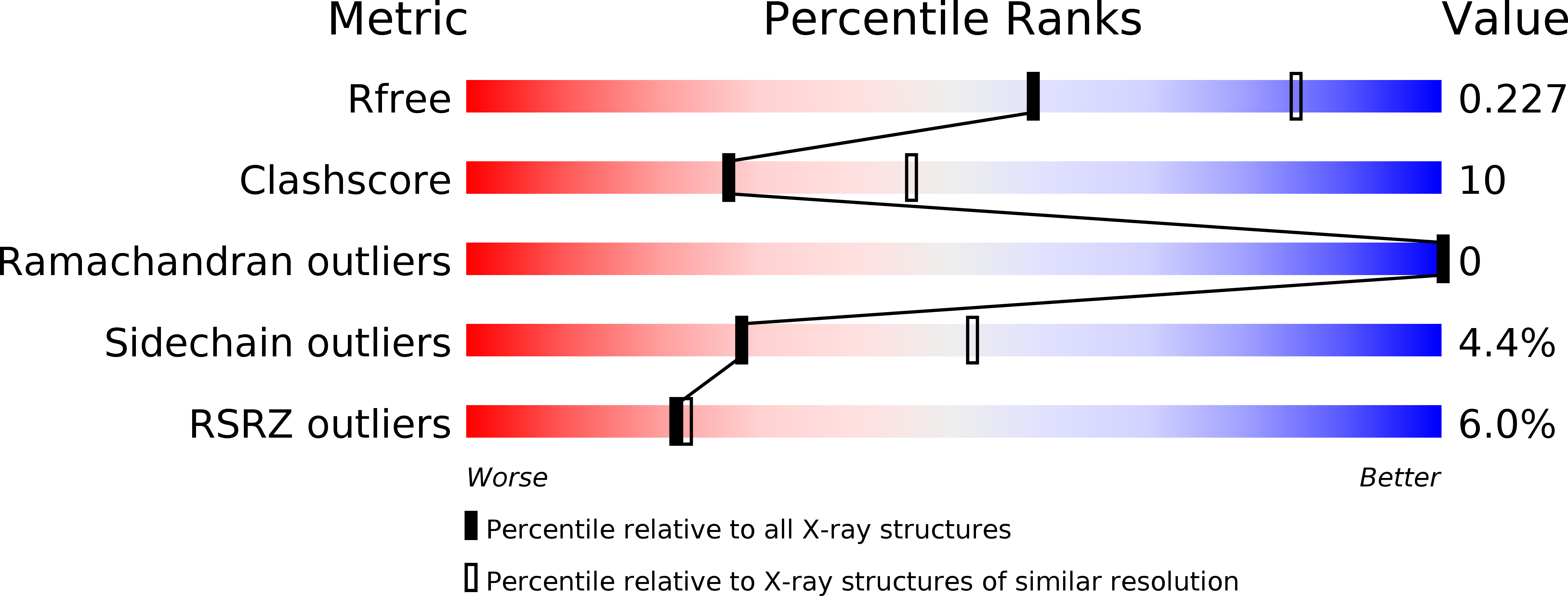
Deposition Date
2009-05-11
Release Date
2009-09-15
Last Version Date
2023-11-29
Entry Detail
PDB ID:
3HFA
Keywords:
Title:
Crystal Structure of Mycobacterium Tuberculosis Proteasome open-gate mutant
Biological Source:
Source Organism:
Mycobacterium tuberculosis (Taxon ID: 1773)
Host Organism:
Method Details:
Experimental Method:
Resolution:
2.50 Å
R-Value Free:
0.21
R-Value Work:
0.17
R-Value Observed:
0.17
Space Group:
P 1 21 1


